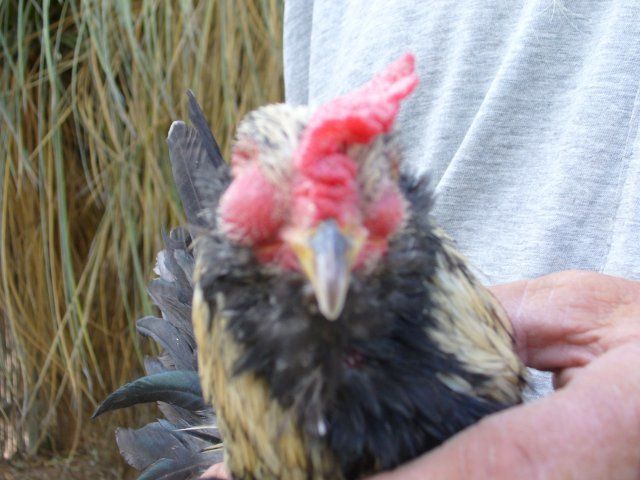http://edis.ifas.ufl.edu/PS012
(excerpt:
"....Each species of roundworm tends to infect a specific area of the intestinal gastro tract. Different species of the same genus may infect several different areas of the tract. In general, the different species of roundworms have very similar life cycles. Adult roundworms lay eggs inside the infected bird. The eggs are voided from the hosts through the feces. The eggs incubate in soil before they become infective. Roundworms may or may not require intermediate hosts. The eggs or intermediate hosts must then be consumed by the avian host. Once the infective agent finds its way back to its infective site, the cycle is complete.
An interesting example of this is the eye worm ( Oxyspirura mansoni ). The eye worm lays eggs on the surface of the eye. These eggs are then washed down the naso-lachrymal duct and pass into the intestinal tract of the host and are voided with feces. The eye worm eggs must then be consumed by a cockroach, the intermediate host. After an incubation period, the worm larvae becomes free inside the body cavity and legs of the cockroach. After the cockroach has been consumed by the avian hosts (chickens, turkeys, peafowl and ducks) the eye worm larvae are released in the crop. They migrate up the esophagus, tear ducts and back to the eye. The time required for the cycle to be completed may be a few days or several weeks depending upon the worm species......."
http://www.merckvetmanual.com/mvm/index.jsp?cfile=htm/bc/202800.htm
(MERCK)
"...Eggs of Oxyspirura mansoni , Mansons eyeworm, are deposited in the eye, reach the pharynx via the nasolacrimal duct, are swallowed, passed in the feces, and ingested by the Surinam cockroach, Pycnoscelus surinamensis . Larvae reach the infective stage in the roach. When infected intermediate hosts are eaten, liberated larvae migrate up the esophagus to the mouth and then through the nasolacrimal duct to the eye, where the cycle is completed..........
As a treatment for Mansons eyeworm, a local anesthetic can be applied to the eye, and the worms in the lacrimal sac exposed by lifting the nictitating membrane. A 5% cresol solution (1-2 drops) placed in the lacrimal sac kills the worms immediately. The eye should be irrigated with sterile water immediately to wash out the debris and excess solution. The eyes improve within 48-72 hr and gradually become clear if the destructive process caused by the parasite is not too far advanced. "



